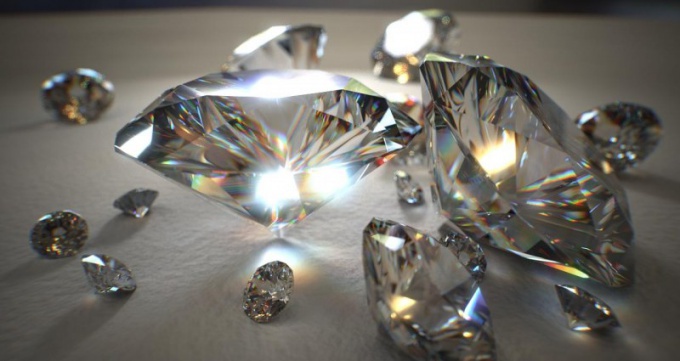Diamond
The chemical composition of this mineral is one of the simplest, as it consists of pure carbon with impurities of oxides of calcium, magnesium and iron. The question about the origin of this transparent and solid mineral scientists to a common opinion have not come. The most common hypothesis that the mineral formed from cooling of mantle silicates in the earth's crust, and the surface was through a series of underground explosions. In nature diamonds are inclusions in olivines, serpentine and graphites. As a result of destruction of volcanic rocks often diamonds are entering the river and sea pebble gravels.
The diamond's unique characteristics and structure, and it is impossible to find two identical stones. Determine the fake and find out the diamond is the stone or rock crystal, is quite simple, if the stone is not in the frame. If you look at the sun through a faceted diamond, you see only a bright dot, and the imitators miss the light completely.
Aquamarine
Very wear-resistant and high purity stone, one of the varieties of beryl blue or greenish-blue shade is called aquamarine. The value of aquamarine determines the intensity and purity of color of the stone. The most valuable and rare aquamarine - deep blue or sea green, and the greenish crystals are valued much less.
The cheapest and widespread imitation of aquamarine is a blue spinel, but to distinguish a fake is not difficult, because it has spherical air bubbles. And artificial blue spinel colored by cobalt, and consequently, in the color filter is red.
Topaz
Often confused with aquamarine Topaz - they are of similar color and inclusions. But Topaz aquamarine characteristic inclusions that resemble chrysanthemum white, does not happen. Glitter and play of the facets of the Topaz is much stronger compared to the aquamarine.
Colors of Topaz is very high. It has tea, light yellow, bluish, pinkish shades, and under heating and from radiation treatment becomes more saturated colors. The most rare and expensive varieties is a natural Topaz, red and pink shades.
Rubin
The most expensive and precious transparent stone in the world is ruby. Perfect rubies of large size in nature is rare, so they cost more diamonds. But in the market there are a lot of synthetic rubies grown by different methods. To distinguish without special equipment synthetics from real stone it is practically impossible, but enough to know that a large and clean rubies are rare and most often are not offered for sale in the ordinary jewelry stores.
